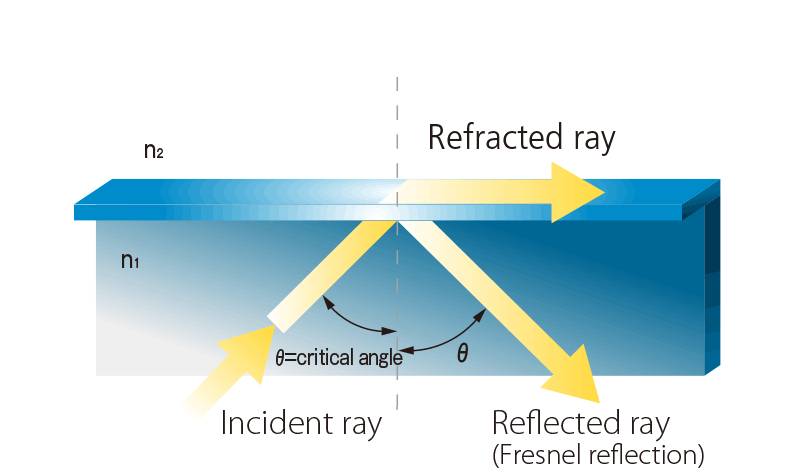Nazetaro's Room
Full coverage of SUMITA
What are Optical Glass Fibers?
An optical glass fiber is a flexible, transparent thread made by glass. The thinnest glass optical fiber Sumita draws has a diameter of 30 micrometers (μm), a mere half the width of an average human hair. Its thin profile makes the glass flexible.
Like a hose carries water from one place to another, an optical fiber confine and guide light along its length.
What keeps light in the hose is the structure of the optical fiber, which is made up of two separate parts.
At the center of an optical fiber is a thin glass tube called a "Core" that transports light. Wrapped around the outside of the core is another layer of glass called the "Cladding", reflecting light back into the core causing light waves to travel the length of the fiber.
If the core is the part that allows water to pass through, the cladding is the hose.
A light guide is made up of such optical fibers; one light guide can have dozens to hundreds of thousands of such optical fibers bundled together.
Numerical Aperture and Opening Angle
Numerical aperture (NA) and opening angle (2θ) of an optical fiber are calculated by refractive indices of core and clad material. The equation is as follows (where n1= the index of refraction of the core glass, and n2= the index of refraction of the cladding glass):

Applying the principle of TIR and taking advantage of accumulated optical glass technology, Sumita offers a wide variety of optical fibers with different N.A.s.
Structure and Principle
An optical fiber used in light guides consists of a core surrounded by a clad layer (see Figure 1).
- Core is made of optical glass which has an excellent transmission property.
- Clad is made of weather-resistant glass, and works as a covering material.
This structure of fiber allows light to travel along the fiber through repeated total internal reflections* inside the core from one end to the other.
Total internal reflections (TIR) is the phenomenon that reflection of the total amount of incident light at the boundary between two media (see Figure 2). The phenomenon occurs at the boundary between two mediums having different refractive indices, such that if the incident angle in the first medium is greater than the critical angle, then all the light is reflected back to that medium.




